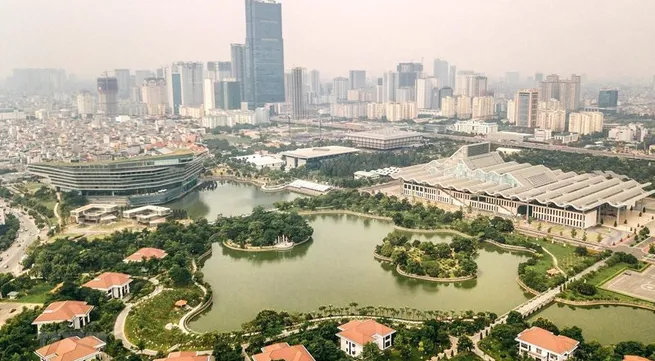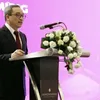The harmony between preservation and development

The historic inner city area of Hanoi is defined as being from from Belt Road No.2 to the right bank of the Red River, in the districts of Hoan Kiem, Ba Dinh, Dong Da and Hai Ba Trung, with a total width of over 2,700 hectares (accounting for 8% of the city’s total area). The area has a particularly important position. It not only is the political and administrative centre of the capital and country but also preserves the core values of the capital city with thousand years of civilisation.
However, there are many shortcomings in conservation and development due to the high population density, the lack of infrastructure in some areas compared to modern norms, causing overload and affecting the quality of the people’s lives.
The six subdivision planning projects contain contents to preserve and promote the historical and cultural values of the old quarter and surrounding areas as well as plan the completion of the technical and social infrastructure to improve the living quality of residents. According to the plan, by 2030, the area of roads will increase by 213.95 hectares compared to the current situation, five urban railway lines with 22 stations will be developed; and 89 parking lots, including 38 high-rise and 51 underground ones, will be built. The urban space currently has mainly low-rise buildings. High-rise buildings will be arranged along the belt roads, radial roads and urban reconstruction areas.
To implement the plan, the authorities will reconstruct the city and reserve a large land fund for the construction of more technical and social infrastructure projects while controlling mechanical population growth and reducing the population in this area from over 887,000 to 672,000 in 2030. From now until 2030, the city will synchronously implement projects on migration and ground clearance as planned, as well as relocate polluting production facilities, universities, hospitals, and head offices so there will be a larger land fund for the construction of schools, kindergartens and public works. According to calculations, around 215,000 people will move out of the historic inner city area to serve the road expansion. The households living in historic sites will be also relocated.
The subdivision planning on the inner city is the legal basis for the identification of construction investment projects and the implementation of detailed planning, urban design for development control and urban management, as a basis to attract investors. Therefore, the violation of construction orders, a problem in the area for many years, will be settled. However, many people are concerned about the feasibility of the projects, especially the relocation of polluting production facilities, universities, hospitals, head offices of ministries and agencies and ground clearance. Several ministries, agencies, universities and hospitals have not returned their old head offices in the inner city to the State although they have new ones. Most production facilities have become large and loaded apartments since they were relocated.
The realisation of the planning projects requires the determination and persistence of the entire political system, especially perseverance and persistence in implementing synchronous measures, from mechanisms, policies, traffic infrastructure and investment and the construction of new urban areas as well as an improvement in the livelihoods for people. By doing this, these projects can really come to life, contributing to sustainable development and a harmony between cultural and economic development in Hanoi’s inner city, ensuring a good living standard and working environment as well as favourable investment opportunities for the people.





